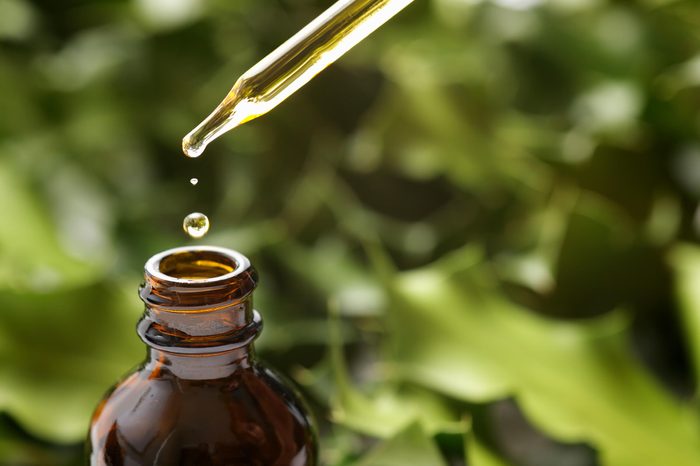
Use a vitamin C serum
Vitamin C won’t magically erase age spots, but the vitamin’s powerful antioxidant properties can quickly and safely promote healthier skin. (Stop wasting your money on expensive skincare products and try these 15 tricks for naturally glowing skin.) “Vitamin C is a potent skin brightener,” explains Pearl Dworkin, a San Francisco Bay-based esthetician. “If used day and night with a sunblock during the day, a vitamin C serum will brighten your skin.”
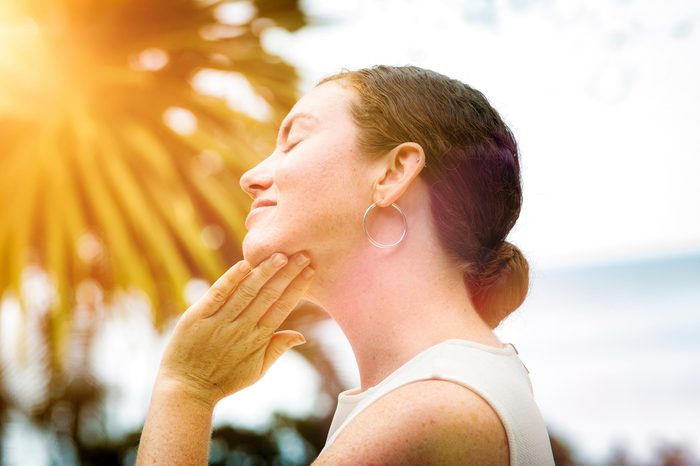
Slather on sunscreen
Once you see discoloration start to accumulate on your face, the damage to your skin has already been done, right? Not entirely. “Once you have sun spots, the melanin in that cell has been activated and will easily be reactivated with sun exposure,” Dworkin says. “If you don’t use a sunblock, even the most powerful and expensive spot lighteners won’t work.” (Just make sure you avoid these sunscreen mistakes.) Read labels carefully to make sure you’re using a formula that contains the physical blockers titanium, zinc, or both. (They’re more effective than chemical blockers.) And don’t forget a hat and sunglasses for extra protection. You can also attempt to use discoloration serums to address discoloration. Here’s what those confusing labels on your sunscreen actually mean.
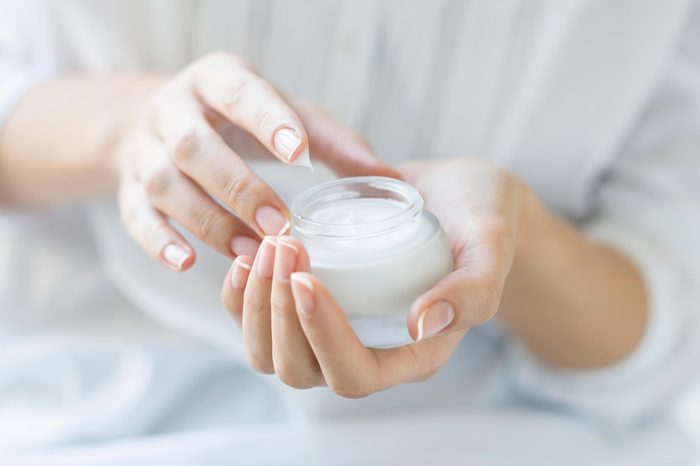
Look for niacinamide
A cream or serum containing niacinamide can lighten age spots without breaking the bank, according to Anthony Youn, MD, a plastic surgeon in Troy, MI.“Over-the-counter creams or serums containing niacinamide are an inexpensive way to reduce spots,” Dr. Youn says. “Niacinamide is a well-tolerated ingredient that can start to show results within six to eight weeks of treatment.” Get more advice by reading about what dermatologists do that you don’t.
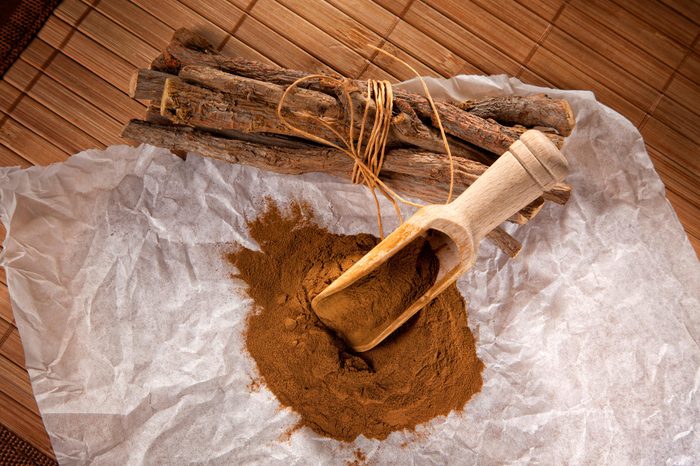
Try a natural extract
If chemical-laden serums and creams aren’t your thing for age spot removal, consider a more natural treatment, such as licorice extract, which is sold as an herbal supplement. Dr. Youn recommends applying licorice root extract to the face twice a day. “Within two months, you should see some lightening of the spots,” he says. (Make these eight natural recipes for amazing skin cooked up by a plastic surgeon!)
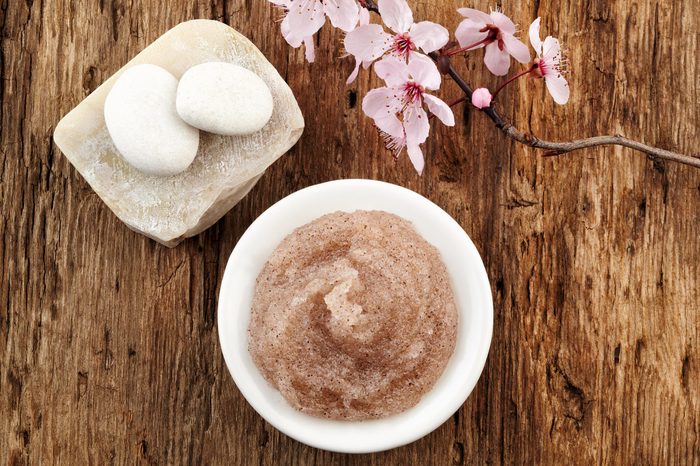
Exfoliate, exfoliate, exfoliate
The easiest way to fade age spots fast is by exfoliating the skin, and alpha hydroxy acids (such as glycolic acid and lactic acid) are incredibly effective, says Cynthia Bailey, MD. a dermatologist in Sebastopol, CA. (Just be sure to avoid these 10 exfoliating mistakes.) Dr. Bailey recommends using a Japanese nylon cloth called a Salux for best results. “Apply the cream right after the shower to immensely lighten the pigment and remove dead cells,” she says. Two options: Glytone, a glycolic acid formula, or AmLactin, which contains lactic acid. Also consider these skin serums, which may be the answer to all your skin problems.
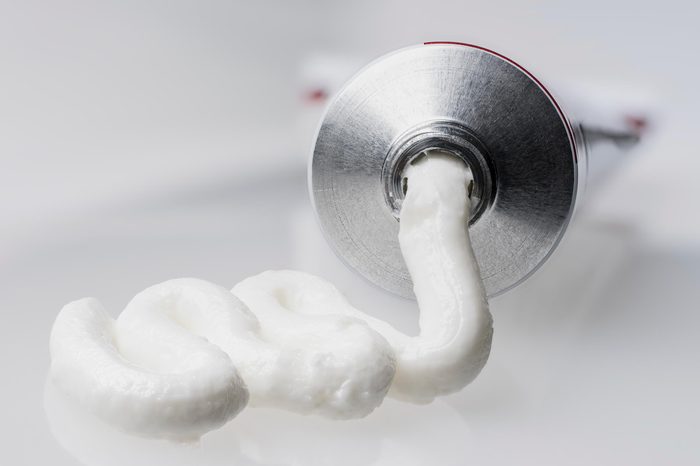
Go prescription strength
While drugstore products can make a difference in your sunspots, you’ll need to see your dermatologist for more serious fading action. Ben Behnam, MD, a dermatologist in Santa Monica, CA, recommends prescription creams such as those containing hydroquinone, a topical bleaching agent. Ask about Glytone Skin Lightening Cream with 4% hydroquinone—available by prescription. We asked a dermatologist to explain how to layer on skin products for best results.
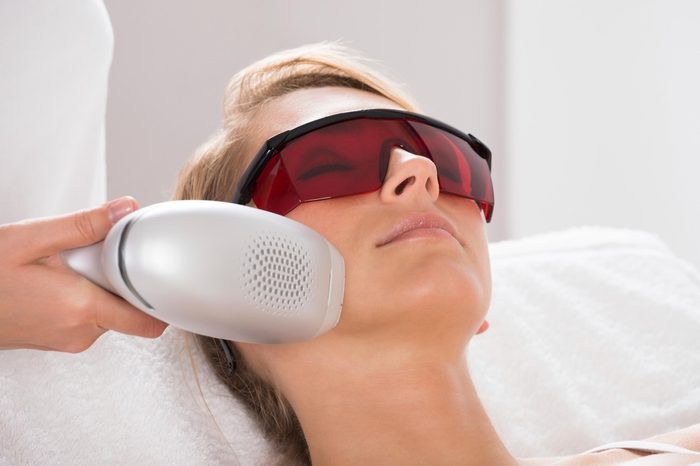
Consider a peel or laser
If you’re looking for dramatic results, talk with your dermatologist about a chemical peel or laser treatment, such as BBL (broadband light), which targets excess brown and red pigmentation in the skin. Although both treatments can reduce age spots significantly, Dr. Behnam notes that they do tend to come back over time, especially if you’re inconsistent with sunscreen. Read more about the benefits of laser treatments.

